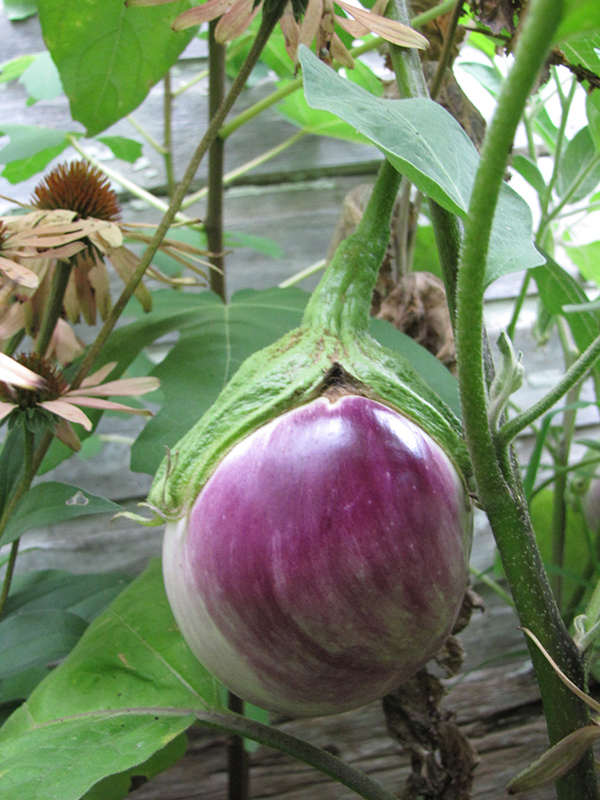Rosa Bianca Eggplant Solanum melongena 'Rosa Bianca' Height: 32 inches Spacing: 18 inches
Sunlight:
Hardiness Zone: (annual) Group/Class: Heirloom Description: A beautiful heirloom variety producing 6 inch oval shaped white and lavender colored fruit; thrives in high heat and humidity; mild flavor with creamy flesh is ideal for baking or eggplant parmesan Edible Qualities Rosa Bianca Eggplant is an annual vegetable plant that is typically grown for its edible qualities, although it does have ornamental merits as well. It produces creamy white oval eggplants (which are technically 'berries') with a lavender blush and creamy white flesh which are typically harvested when mature. The eggplants have a mild taste and a firm texture. The eggplants are most often used in the following ways: Planting & Growing Rosa Bianca Eggplant will grow to be about 32 inches tall at maturity, with a spread of 18 inches. When planted in rows, individual plants should be spaced approximately 18 inches apart. This fast-growing vegetable plant is an annual, which means that it will grow for one season in your garden and then die after producing a crop. This plant can be integrated into a landscape or flower garden by creative gardeners, but is usually grown in a designated vegetable garden. It should only be grown in full sunlight. It does best in average to evenly moist conditions, but will not tolerate standing water. It is not particular as to soil pH, but grows best in rich soils. It is somewhat tolerant of urban pollution. Consider applying a thick mulch around the root zone over the growing season to conserve soil moisture. This is a selected variety of a species not originally from North America, and it is considered by many to be an heirloom variety. Rosa Bianca Eggplant is a good choice for the vegetable garden, but it is also well-suited for use in outdoor pots and containers. With its upright habit of growth, it is best suited for use as a 'thriller' in the 'spiller-thriller-filler' container combination; plant it near the center of the pot, surrounded by smaller plants and those that spill over the edges. It is even sizeable enough that it can be grown alone in a suitable container. Note that when growing plants in outdoor containers and baskets, they may require more frequent waterings than they would in the yard or garden.![]()
![]()
![]()
![]()
![]()
![]()
![]()
![]()

